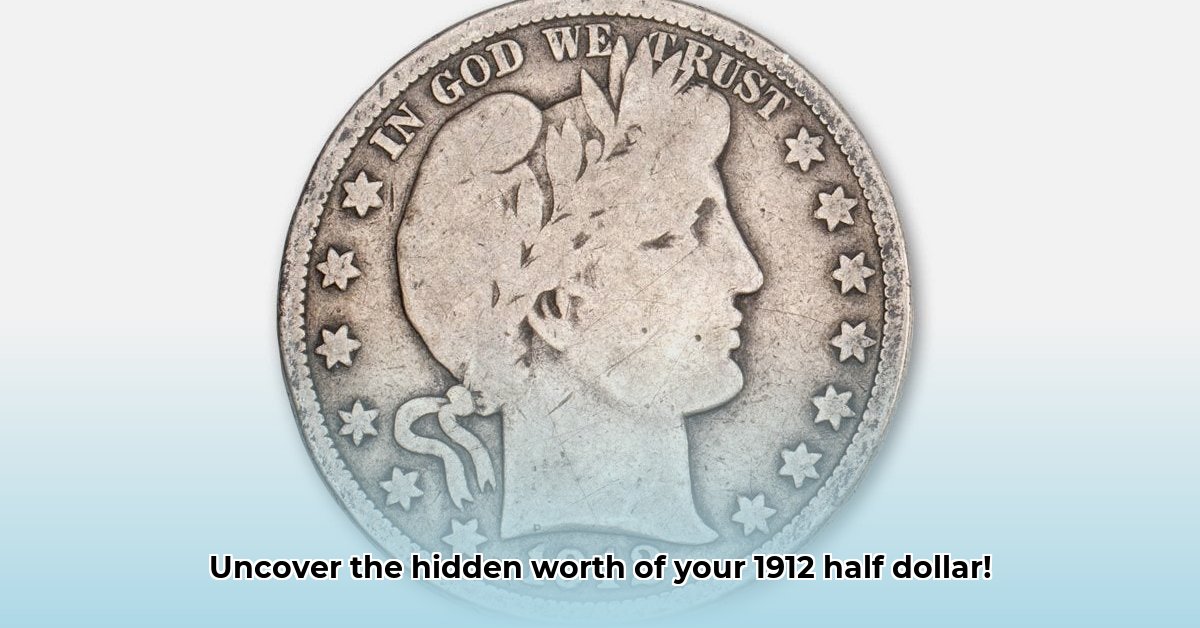
Understanding the 1912 Half Dollar's Value
The 1912 Barber half dollar, a piece of American numismatic history, holds a fascinating story and potential value. Determining its worth requires understanding several key factors: its condition, mint mark, and current market demand. This guide provides a structured approach to assessing your coin's value, whether you're a seasoned collector or a curious beginner.
Did you know that a seemingly insignificant detail like the mint mark can drastically impact a coin's worth? Let's delve into the specifics.
Decoding the Mint Mark: Location Matters
Three mints produced 1912 half dollars: Philadelphia (often unmarked, or with a "P"), Denver ("D"), and San Francisco ("S"). The mint of origin significantly influences value. Philadelphia, producing the largest quantity, generally yields the lowest value. Conversely, San Francisco coins, often rarer, tend to command higher prices. This is due to basic supply and demand principles. The rarer the coin, the higher its potential value.
Condition: The Cornerstone of Value
A coin's condition is paramount. Think of it like a classic car; a pristine example is far more valuable than a damaged one. Numismatists use a grading scale, typically the Sheldon Scale, to assess condition, ranging from Poor (1) to Mint State (MS-70). A flawless MS-70 coin can be extremely valuable, while even minor imperfections will negatively impact its value.
How much difference does condition make? Consider two 1912-S half dollars: one in pristine MS-65 condition, the other showing significant wear. The former could be worth hundreds, even thousands, while the latter might only be worth the melt value of its silver content.
Grading System: From Poor to Perfect
Understanding the grading system is critical. The Sheldon Scale, a widely accepted standard, ranges from 1 (Poor) to 70 (Mint State-65). Each grade reflects the coin's wear and tear. Higher grades mean better condition and higher value. Professional grading services, such as PCGS (1), offer objective assessments, but understanding basic wear and tear indicators—such as scratches, nicks, and luster—is still essential for even a beginner.
"Even minor imperfections, like a scratch on Lady Liberty's hair, can significantly lower a coin's grade and value," says Dr. Eleanor Vance, Curator of Numismatics at the National Museum of American History.
Market Dynamics: Supply, Demand, and Silver Prices
The value of a 1912 half dollar is not static. Market forces, including collector demand and the price of silver (as these coins are primarily silver), significantly influence its value. Monitoring online coin resources and auction results provides real-time market insights. Fluctuations in silver prices directly impact the melt value, particularly for lower-grade coins.
A Collector's Roadmap: From Beginner to Expert
Beginner: Start with affordable, lower-grade coins to gain experience in handling and assessment.
Intermediate: Aim to complete a set, acquiring a coin from each mint (P, D, S). Target coins in at least "Fine" or "Extremely Fine" condition.
Advanced: Focus on acquiring high-grade Mint State coins and attend coin auctions to compete for exceptional examples. Specialize in a specific area within the coin collecting field.
How to Accurately Grade a 1912 Barber Half Dollar: A Step-by-Step Guide
Understanding how to accurately grade your 1912 Barber half dollar is critical to determining its value. This isn't simply about assigning a number; it's about a thorough assessment of its condition.
Here's a step-by-step guide:
Examine the Details: Closely inspect Lady Liberty's hair. Are the strands sharply defined, or are they worn smooth? The eagle's feathers offer similar insights. Sharp, well-defined details point toward a higher grade.
Assess Surface Features: Look for scratches, nicks, and other imperfections. Even minor blemishes can significantly impact the grade.
Analyze Luster and Tone: A bright, lustrous coin usually suggests a higher grade, while a dull, dark tone may indicate considerable wear.
Identify the Mint Mark: Pinpoint the mint mark (P, D, or S). This significantly impacts value due to differing production quantities at each mint location.
Compare to Standard Images: Use reputable online resources and grading guides to visually compare your coin to examples of known grades. This requires practice and experience.
Consider Professional Grading: For high-value coins or when you are uncertain of the coin's grade, professional grading services offer objective and certifiable valuations.
Key Takeaway: Accurate grading involves a meticulous visual examination and a sound understanding of the grading scale and its nuanced implications.